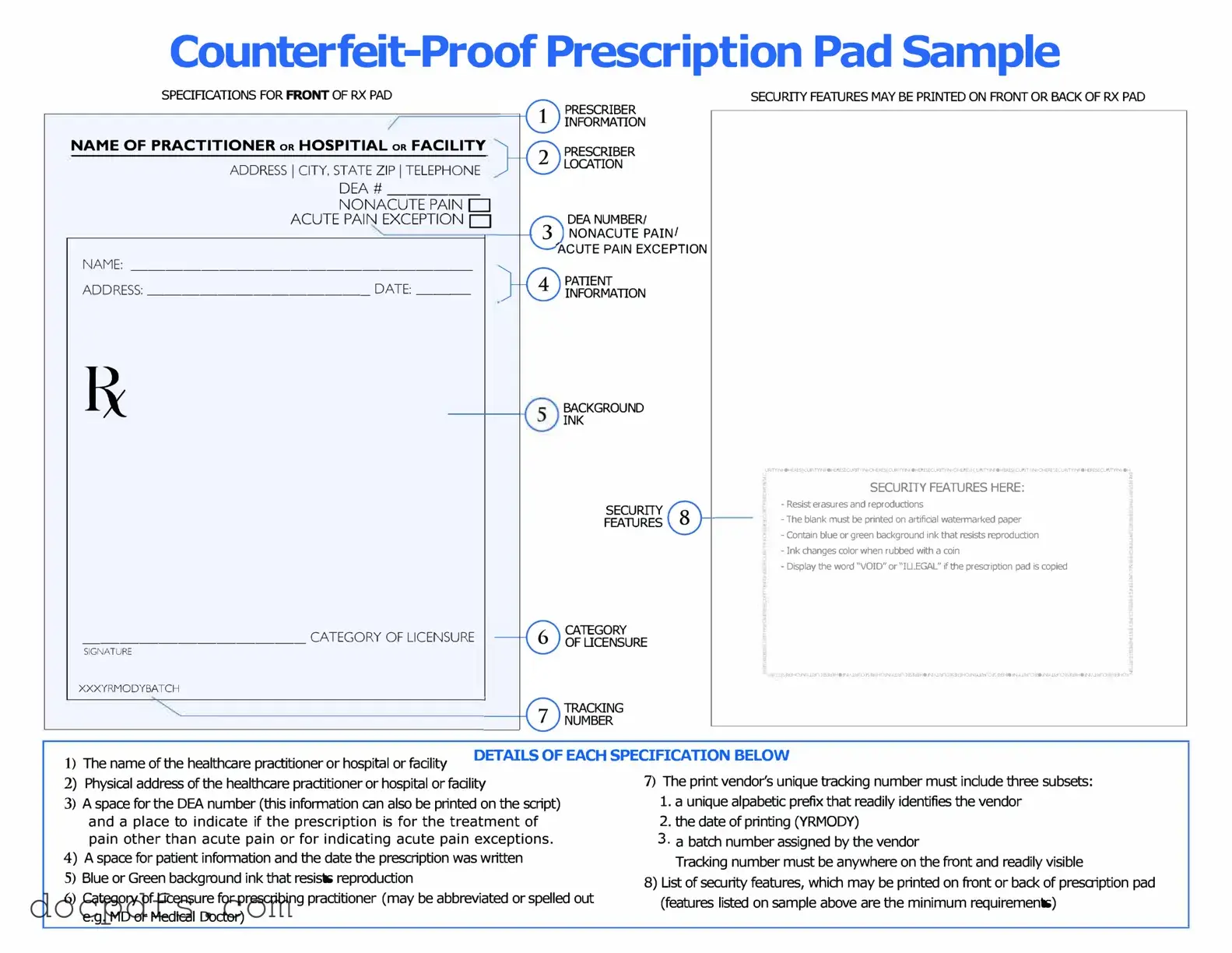The Prescription Pad form plays a crucial role in the healthcare system, serving as a bridge between medical professionals and patients. This essential document allows healthcare providers to prescribe medications, ensuring that patients receive the appropriate treatment for their conditions. Typically, the form includes vital information such as the patient's name, date of birth, and medication details, including dosage and frequency. It also contains the physician's information, including their signature, which validates the prescription. The design of the form often incorporates safety features to prevent forgery and misuse, reflecting the importance of secure and responsible medication management. Understanding the components of the Prescription Pad form can empower patients and caregivers alike, fostering a collaborative approach to health and well-being.
